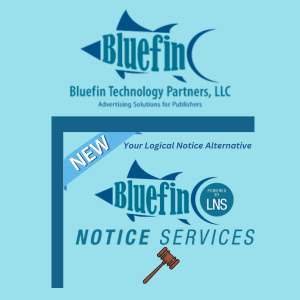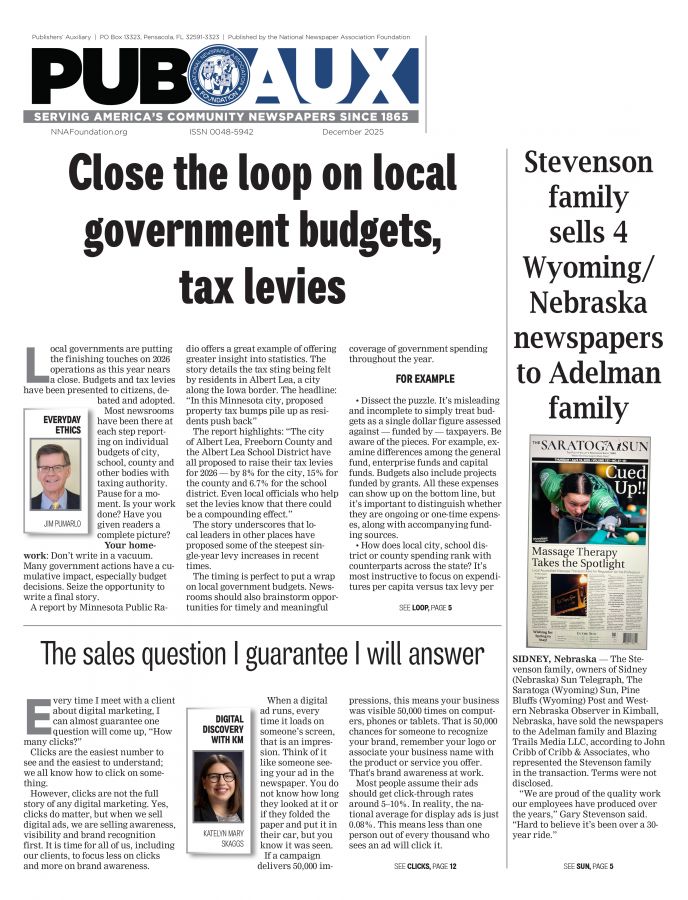A unique concept: Bulk Online Subscription Plan
Dan Wilcox
Aug 1, 2019

The lifeblood of almost every non-daily newspaper and magazine is still print advertising sales. While some might believe that web advertising is a close second, in general, this is not the case. Granted, the trend is slowly moving in that direction, especially with daily papers, but most small and medium-sized non-daily publishers still haven’t found the silver bullet — that thing that allows them to get comparable revenue from their web advertising. Yes, monetizing publication websites can help, and newspaper publishers should use their web presence to grow print and digital subscriptions, etc., but it’s still more challenging than the print side.
Over the years, publishers have found some pretty cool ways to monetize their websites. Whether they’re bundling web and print ads, selling website sponsorships (which I discussed in past articles), or focusing more on subscriptions, it’s all been a learning experience. Publishers listen to their advertisers, look at how other publishers are using their websites, participate in social media and plod forward, often into uncharted territory. What I find fascinating is this — there’s no one right way to do it! The one thing that stands out, though, is that one must always be looking for innovative ways to use their website to complement their print edition.
This article talks about one such idea I used many years ago when I ran my two newspapers. It’s called the Bulk Online Subscription Plan — BOSP for short. Acting as circulation manager, I personally sold 43 BOSP subscriptions, which resulted in 6,000+ paid online subscribers, a steady flow of new print subscription leads and sales, and over the years, even new print advertisers. I think it’s easier to apply the BOSP concept to industry newspapers such as mine, which covered oil, gas and mining, but it’s still applicable to paid circulation community newspapers. When implemented correctly, it can more than double a publication’s paid circulation and create a brand new revenue stream.
THE CONCEPT
The concept is to sell a single BOSP subscription to a company or government agency (city or state government, usually) so that all of their employees have online access to the newspaper using a simple activation code. Individual users activate their online subscription with the activation code and then choose their own username/password when setting up their individual account, which is actually like a sub-account under the main company or agency.
For example, if we use the State of Texas for demonstration purposes, here’s how a call might go when trying to sell the BOSP to the State.
To make the sale, I call one of our print subscribers employed by the State of Texas. We’ll call him Bob. I say, “Bob, we’ve created a new program at the newspaper called the Bulk Online Subscription Plan. Basically, we’d like to give all State of Texas employees online access to our Weekly Tribune website. We give you an easy-to-remember code like ‘SOT’ that allows any State of Texas employee online access to our website with the activation code. What do you think about the idea?”
Bob might ask, “How much?” and our response could be, “Well, how many of your 176,000 employees do you think would use the subscription?” From experience, I practically guarantee Bob will say something like, “Maybe 35” because Bob is thinking in terms of his department only. (After all, it’s coming out of his department’s budget.) So we reply with, “Well, online subscriptions at the Tribune are normally $40, so how about $10 x 35, meaning $350 for the year? And you’re not limited to just 35 people. If all 176,000 employees used the subscription, that’s fine. We just ask that you please don’t decrease your number of existing print subscriptions.”
If Bob says yes, then you made the sale. But if Bob says no, remember that you only need one State of Texas employee to say yes. So, Bob says yes and we reply, “Great! I’ll send you an email with the details that you can then forward to your employees. It will basically be an email written from you, which you can reword.” The email we send Bob says something like this:
Dear State of Texas employees,
All State of Texas employees have online access to the Weekly Tribune website. You can activate your (free) subscription at www.XYZWeeklyTribune.com/login using ‘SOT’ as the activation code. Enjoy!
Thanks,
Bob
Then wait for Bob to send out the email. If he sends it to all State of Texas employees, that’s it. Usually that’s not what happens, so you call a few managers at the State and say, “Did you know that all State of Texas employees have online access at www.XYZWeeklyTribune.com? All they need to do is use SOT to activate their subscription. The subscription is already paid for. Would you be able to notify them?”
You get the point. The hope is that things will snowball and far more than 35 state employees activate their online subscription.
A FEW DETAILS
Let’s say 20 companies or government agencies buy a BOSP subscription; as a result, 3,000 people activate their online access. That means:
- You have 3,000 sales leads you can attempt to upgrade to print subscriptions.
- These new leads could result in the need to hire a circulation salesperson.
- Bragging rights to the paper’s advertisers regarding increased print and online circulation.
- The activation codes assigned (for example, ‘SOT’ for the State of Texas) should be super easy to remember so they spread verbally and virally. Don’t worry that others outside the State of Texas will find out the code and use it because the code only allows users with an email address ending in @stateoftexas.gov or @state.texas.gov (etc.) to activate their subscription. They won’t receive the email containing the final activation link unless they’re actually an employee. This also means the State of Texas doesn’t need to send their protected email lists to the paper.
- Occasionally, the paper will land a new advertiser because the expanded outreach reaches so many new readers. It’s a natural cause and effect.
Finally, when it’s time to renew the BOSP subscription for the State of Texas, give Bob a call and let him know the number of employees actually using the subscription. Let’s say the number is something like 537 employees. While it’s tempting to charge them $5,370 for the next year ($10 x 537), this could be a mistake. The previous year they only paid $350, so in my experience, it’s best to never charge the customer more than double the previous rate (and to cap the amount at about $2,500). Using this logic, the State of Texas would be charged $700 to renew. Ask Bob if he would like to renew, and if he says yes, great. If Bob says no, only one of these 537 individuals needs to say yes.
HOW DO I ADD A BOSP FEATURE TO OUR WEBSITE?
Our newspaper website solution, ROAR, is the only solution I’m aware of that offers a built-in BOSP feature. If I’m wrong, or if our higher priced competitors steal the idea, it’s important that the paper’s website subscriber database can also sync with the paper’s in-office subscription database; it’s painful to manually keep those two databases in sync. Our system syncs with Interlink, with a free subscription database we offer our clients, and with just about any other subscription database out there.
Dan Wilcox, vice president and a partner of Lions Light Corporation, has over 25 years of experience in the newspaper business. Previously the majority owner of two leading industry newspapers in Alaska, he thrives on helping newspaper owners and managers grow their print circulation and advertising using their website. Dan now resides in Peoria, Arizona, where he enjoys spending time with family and friends, dirt biking, hiking and playing pool. He can be reached at
dan@lionslight.com.










